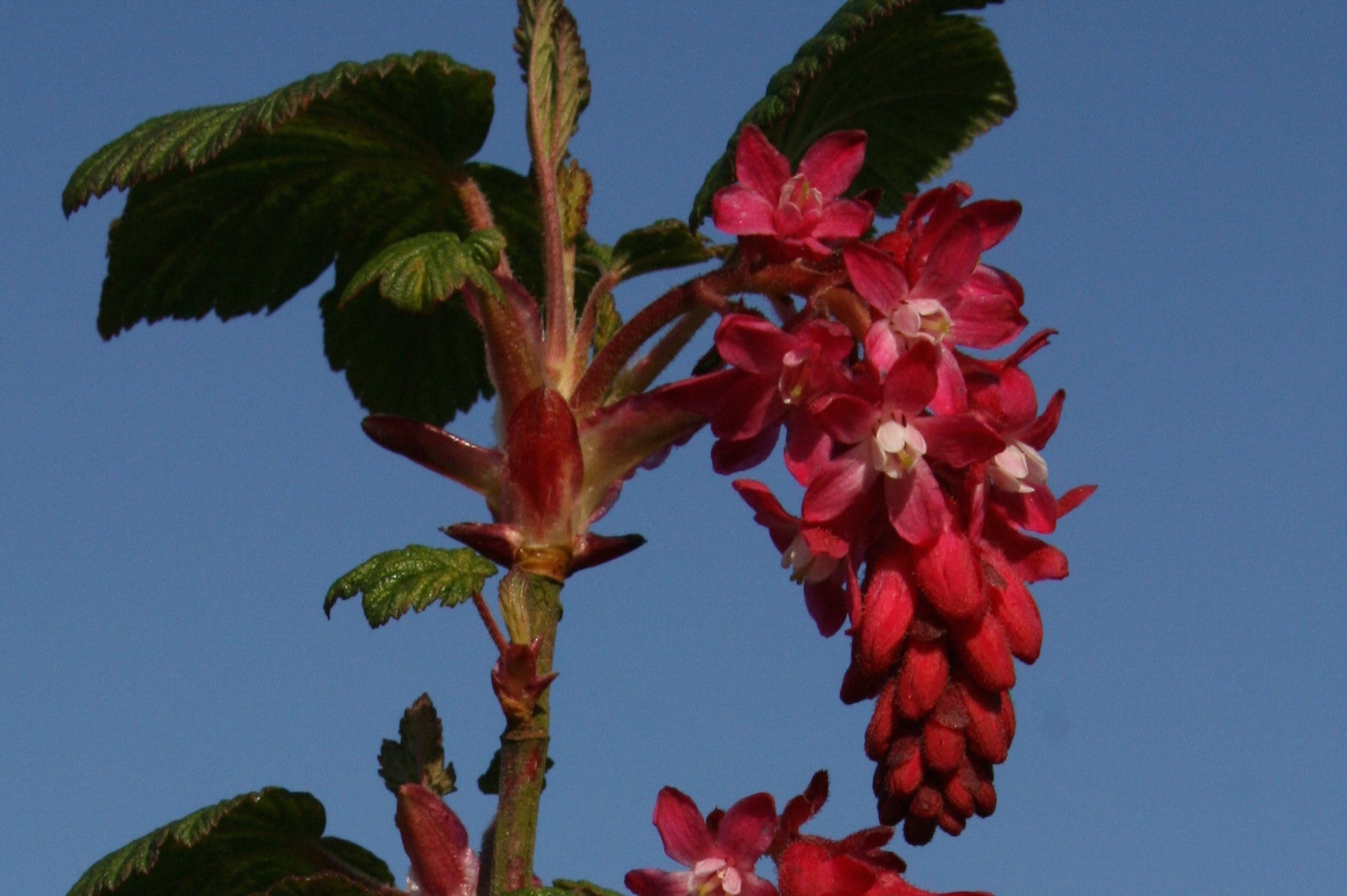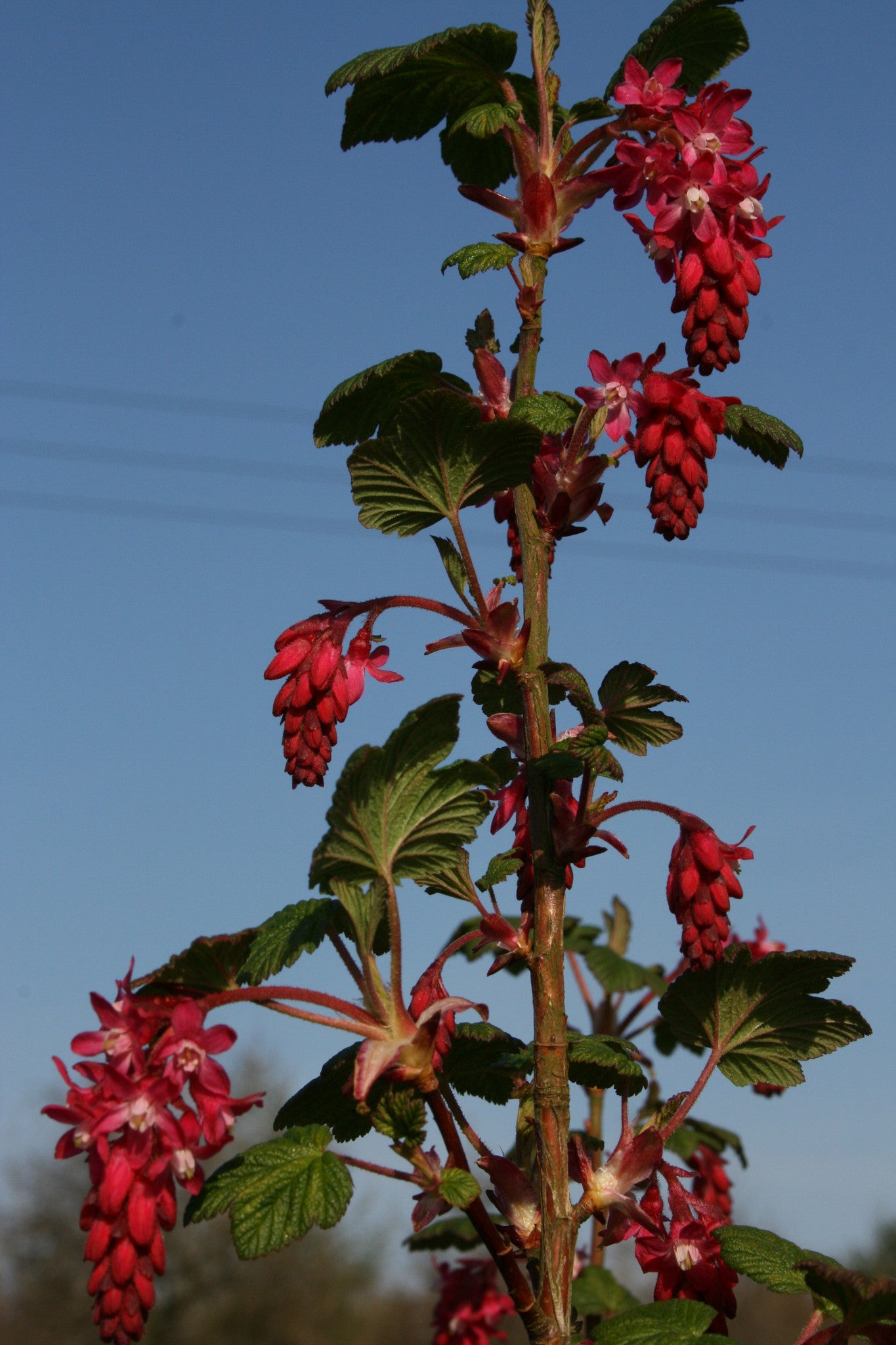Ribes sanguineum 'Taff’s Kim' (v)
Approx. 0.5 litre pot
About this cultivar:
Ribes sanguineum 'Taff’s Kim' is a very attractive form of flowering currant, with draping clusters of red flowers over cream - speckled green foliage. The flowers appear in mid-spring, bringing colour and light to the garden at a time when little else is flowering.
- Position: Full sun, partial shade
- Soil: Almost any soil, grows well in Ballyrobert
- Flowers: March, April, May
- Other features: -
- Hardiness: Fully hardy, grows well in Ballyrobert
- Habit: Bushy
- Foliage: Deciduous
- Height: 150 - 240 cm (5 - 8 ft) but prune if you like
- Spread: 90 - 150 cm (3 - 5 ft)
- Time to full growth: 5 to 10 years
- Plant type: Shrub
- Colour: Green, red
- Goes well with: -
About this genus:
Ribes (ry-bees) is a genus of about 150 species of flowering plants native throughout the temperate regions of the Northern Hemisphere. It is usually treated as the only genus in the family Grossulariaceae. The genus includes the edible currants (blackcurrant, redcurrant, white currant), gooseberry, and several hybrid varieties. It should not be confused with the dried currant used in cakes and puddings, which is a cultivar of small grape (Zante currant). Perhaps it gives its name to the popular blackcurrant cordial Ribena?
In Tudor times, to dream of the ripe fruit of a flowering currant was said to herald great fortune, many children and the accomplishment of your dreams. Some Native Americans used blackcurrant root (Ribes hudsonianum) for the treatment of kidney diseases and menstrual and menopausal problems. Cree Indians used the fruit of Ribes glandulosum as a fertility enhancer to assist women in becoming pregnant.
Usually providing flowers in spring and berries in summer - Ribes is tough and durable. It tolerates sand or clay as long as the soil is not waterlogged. The best bloom is in full sun, but it will still have plenty of flowers in light or open shade. Very little pruning is required to maintain the loose upright habit. If a branch strays too much out of bounds it can be removed. Plants will often sucker to form a small patch. We often grow ours near walls.




